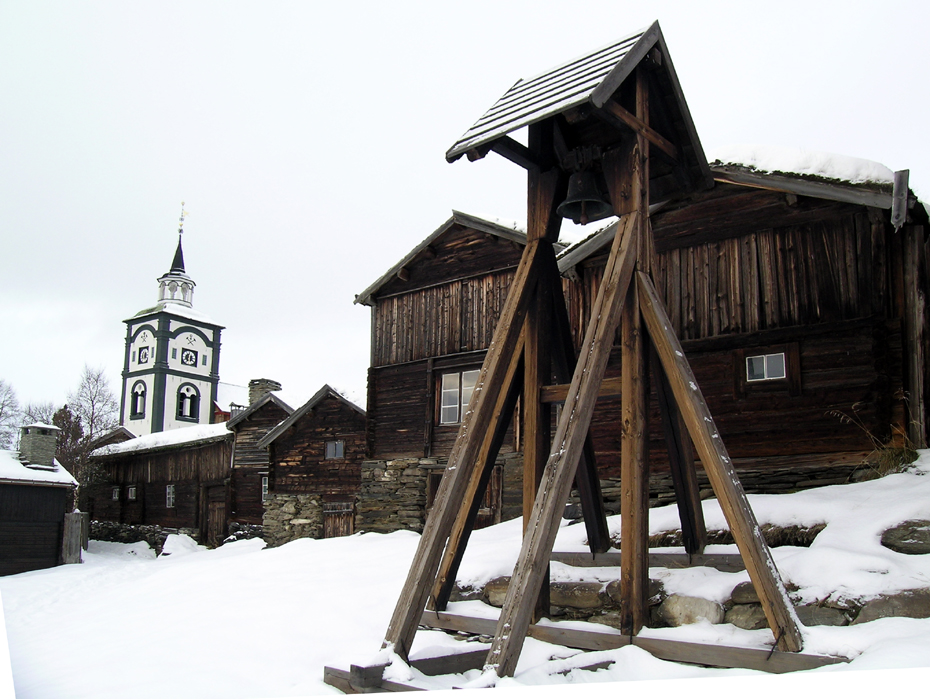Røros Copper Works on:
[Wikipedia]
[Google]
[Amazon]
 The Røros Copper Works at
The Røros Copper Works at
 The Røros Copper Works at
The Røros Copper Works at Røros
Røros ( sma, Plaassja, ) is a municipality in Trøndelag county, Norway. The administrative centre of the municipality is the town of Røros. Some of the villages in Røros include Brekken, Glåmos, Feragen, Galåa, and Hitterdalen.
The minin ...
in Trøndelag
Trøndelag (; sma, Trööndelage) is a county in the central part of Norway. It was created in 1687, then named Trondhjem County ( no, Trondhjems Amt); in 1804 the county was split into Nord-Trøndelag and Sør-Trøndelag by the King of Denmar ...
, Norway operated from 1644 to 1977. Privileges from the Crown were given in 1647, including rights to forests
A forest is an area of land dominated by trees. Hundreds of definitions of forest are used throughout the world, incorporating factors such as tree density, tree height, land use, legal standing, and ecological function. The United Nations' ...
and water resources
Water resources are natural resources of water that are potentially useful for humans, for example as a source of drinking water supply or irrigation water. 97% of the water on the Earth is salt water and only three percent is fresh water; slight ...
within a circle of diameter 90 kilometers. The local farmers were given working obligations, such as transport and charcoal
Charcoal is a lightweight black carbon residue produced by strongly heating wood (or other animal and plant materials) in minimal oxygen to remove all water and volatile constituents. In the traditional version of this pyrolysis process, cal ...
production for the copper works. Among the mines were the ''Storwartz'' mines, ''Hestkletten'', ''Christianus Qvintus'', ''Olavsgruven'', ''Kongens Gruve'' and ''Christianus Sextus''. During its operation a total of 110,000 tons of copper
Copper is a chemical element with the symbol Cu (from la, cuprum) and atomic number 29. It is a soft, malleable, and ductile metal with very high thermal and electrical conductivity. A freshly exposed surface of pure copper has a pinkis ...
and 525,000 tons of pyrite
The mineral pyrite (), or iron pyrite, also known as fool's gold, is an iron sulfide with the chemical formula Iron, FeSulfur, S2 (iron (II) disulfide). Pyrite is the most abundant sulfide mineral.
Pyrite's metallic Luster (mineralogy), lust ...
s was produced.
Geology
This region consists of Cambro-Silurian sedimentary rocks (i.e., rocks from theCambrian
The Cambrian Period ( ; sometimes symbolized C with bar, Ꞓ) was the first geological period of the Paleozoic Era, and of the Phanerozoic Eon. The Cambrian lasted 53.4 million years from the end of the preceding Ediacaran Period 538.8 million ...
, Ordovician
The Ordovician ( ) is a geologic period and System (geology), system, the second of six periods of the Paleozoic Era (geology), Era. The Ordovician spans 41.6 million years from the end of the Cambrian Period million years ago (Mya) to the start ...
and Silurian
The Silurian ( ) is a geologic period and system spanning 24.6 million years from the end of the Ordovician Period, at million years ago ( Mya), to the beginning of the Devonian Period, Mya. The Silurian is the shortest period of the Paleozo ...
formed 545 to 417 million years before the present) that are highly metamorphosed
Metamorphic rocks arise from the transformation of existing rock to new types of rock in a process called metamorphism. The original rock (protolith) is subjected to temperatures greater than and, often, elevated pressure of or more, causin ...
by the Caledonian orogeny
The Caledonian orogeny was a mountain-building era recorded in the northern parts of the British Isles, the Scandinavian Mountains, Svalbard, eastern Greenland and parts of north-central Europe. The Caledonian orogeny encompasses events that occ ...
490 to 390 million years ago (Ma). The mountain formation created extensive folding with numerous anticlines
In structural geology, an anticline is a type of fold that is an arch-like shape and has its oldest beds at its core, whereas a syncline is the inverse of an anticline. A typical anticline is convex up in which the hinge or crest is the l ...
and syncline
In structural geology, a syncline is a fold with younger layers closer to the center of the structure, whereas an anticline is the inverse of a syncline. A synclinorium (plural synclinoriums or synclinoria) is a large syncline with superimpose ...
s across much of Norway. In addition to Cambrosilurian shales, there are numerous volcanic intrusive sills and dike
Dyke (UK) or dike (US) may refer to:
General uses
* Dyke (slang), a slang word meaning "lesbian"
* Dike (geology), a subvertical sheet-like intrusion of magma or sediment
* Dike (mythology), ''Dikē'', the Greek goddess of moral justice
* Dikes ...
s. Metal deposits are formed by hydrothermal interaction of fluids between volcanic and surrounding rocks, concentrating copper sulfates in ore zones.
References
1644 establishments in Norway 1977 disestablishments in Norway Copper smelters Copper mining companies of Norway History of Trøndelag {{Norway-company-stub